Having a toned and strong core is essential for overall fitness and health. One great way to work on your abs is by incorporating kettlebells into your exercise routine. Kettlebells are a versatile piece of equipment that can be used for a variety of exercises that target your core muscles. Here are some great exercises to try with kettlebells to strengthen your abs.
The Kettlebell Swing

The kettlebell swing is a great exercise for working on your abs. To perform this exercise, start by standing with your feet shoulder-width apart and your kettlebell on the floor in front of you. Bend your knees slightly, hinge at the hips, and grab the kettlebell with both hands. Swing the kettlebell back between your legs and then explosively swing it forward to chest height, keeping your core engaged throughout the movement. Repeat for several reps.
The Kettlebell Windmill

The kettlebell windmill is another great exercise for targeting your abs. To perform this exercise, start by standing with your feet shoulder-width apart and your kettlebell held overhead in your right hand. Keep your eyes on the kettlebell and pivot your left foot out to a 45-degree angle. Lower your torso to the left, keeping your arm extended and your core engaged. Return to the starting position and repeat for several reps before switching to the other side.
The Kettlebell Turkish Get-Up

The kettlebell Turkish get-up is a more advanced exercise that works on your abs as well as other muscles in your body. To perform this exercise, start by lying on your back with your left arm extended overhead and your right arm holding the kettlebell. Roll onto your right side and then push yourself up to a standing position while keeping your arm extended overhead. Reverse the movement to return to the starting position and repeat for several reps before switching to the other side.
The Kettlebell Russian Twist
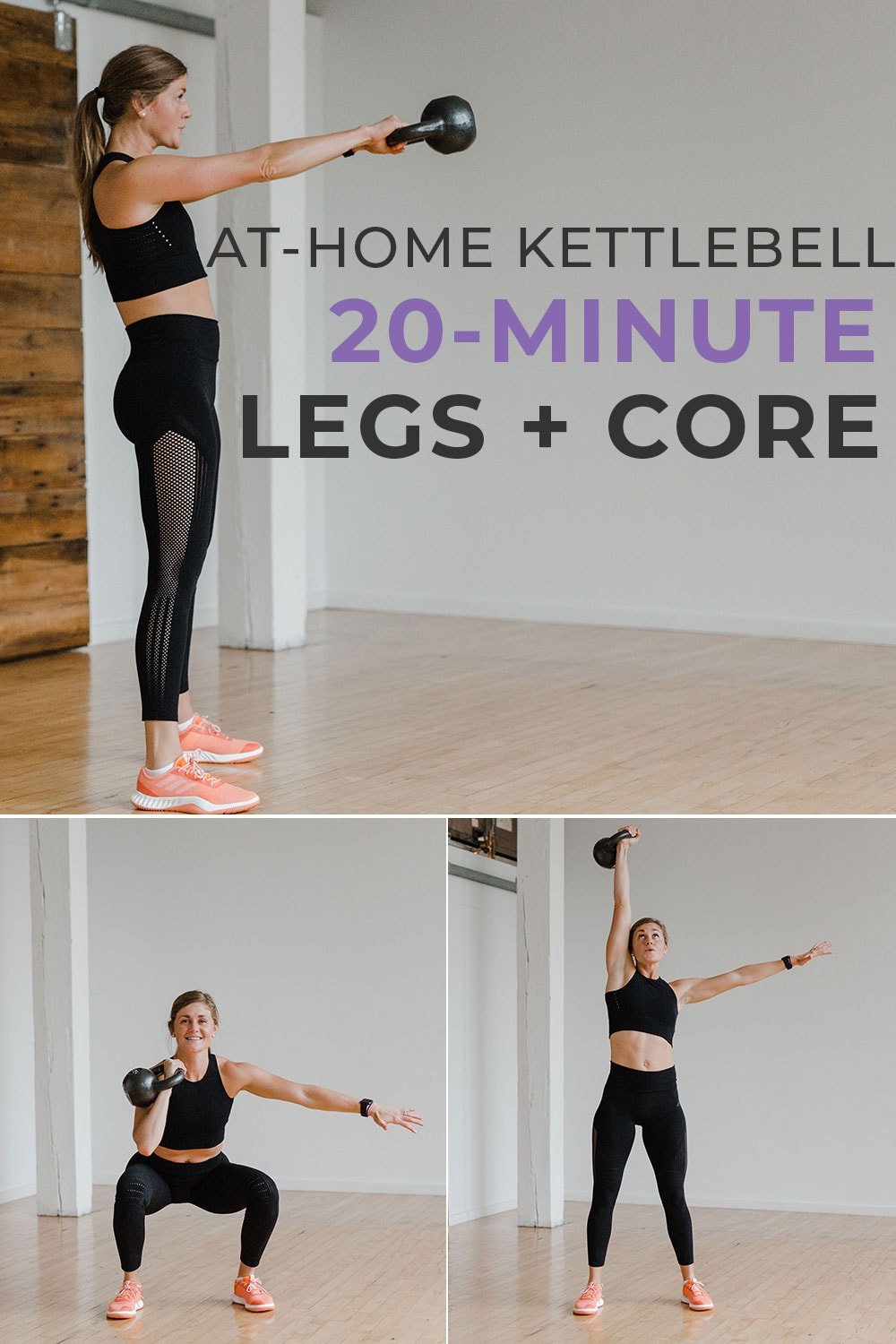
The kettlebell Russian twist is a great exercise for working on your obliques and overall core strength. To perform this exercise, start by sitting on the floor with your knees bent and your feet flat on the ground. Hold your kettlebell with both hands and lean back slightly. Twist your torso to the right and touch the kettlebell to the ground, then twist to the left and touch the kettlebell to the ground. Repeat for several reps.
The Kettlebell Plank Row

The kettlebell plank row is a great exercise for working on your abs and upper body strength. To perform this exercise, start in a high plank position with your hands on the kettlebell handles. Row the kettlebell up to your chest on one side, keeping your core engaged and your hips stable. Lower the kettlebell back down and repeat on the other side for several reps.
The Kettlebell Overhead Squat

The kettlebell overhead squat is a great exercise for working on your abs as well as your lower body strength and mobility. To perform this exercise, start by holding your kettlebell overhead with both hands. Squat down as low as you can while keeping your core engaged and your arms extended overhead. Push back up to the starting position and repeat for several reps.
The Kettlebell Figure 8

The kettlebell figure 8 is a great exercise for working on your abs and overall core strength. To perform this exercise, stand with your feet shoulder-width apart and hold your kettlebell in one hand. Swing the kettlebell between your legs and then pass it to your other hand, bringing it up around the outside of your opposite leg. Pass it back to the original hand and repeat for several reps.
The Kettlebell Deadlift

The kettlebell deadlift is a great exercise for working on your abs as well as your lower body strength. To perform this exercise, start by standing with your feet shoulder-width apart and your kettlebell on the floor in front of you. Bend your knees and hinge at the hips to grip the kettlebell with both hands. Lift the kettlebell up to standing position, keeping your core engaged throughout the movement. Lower the kettlebell back down and repeat for several reps.
The Kettlebell Side Bend

The kettlebell side bend is a great exercise for working on your obliques and overall core strength. To perform this exercise, stand with your feet shoulder-width apart and hold your kettlebell in one hand. Bend to the side, lowering the kettlebell towards your ankle, then return to the starting position and repeat on the other side for several reps.
The Kettlebell Goblet Squat

The kettlebell goblet squat is a great exercise for working on your abs as well as your lower body strength. To perform this exercise, hold your kettlebell at chest height with both hands. Squat down as low as you can while keeping your core engaged and your arms extended in front of you. Push back up to the starting position and repeat for several reps.
The Kettlebell Lunge

The kettlebell lunge is a great exercise for working on your abs as well as your lower body strength and balance. To perform this exercise, hold your kettlebell at chest height with both hands. Step forward with one foot into a lunge position, keeping your core engaged and your arms extended in front of you. Push back up to the starting position and repeat on the other side for several reps.
The Kettlebell Side Plank
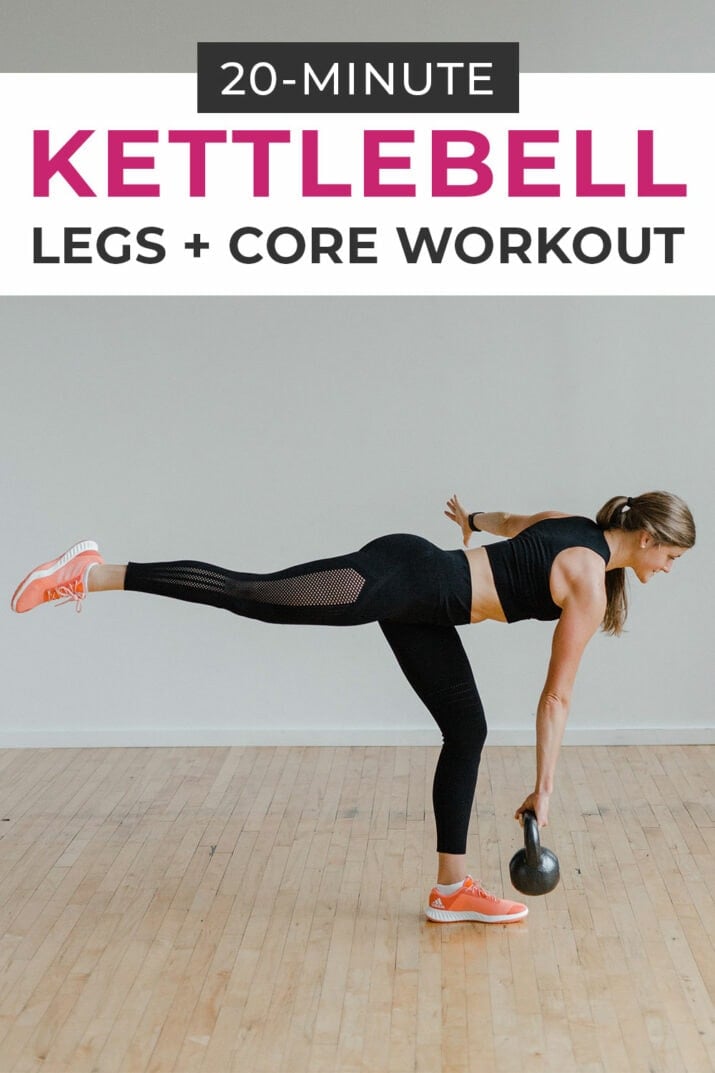
The kettlebell side plank is a great exercise for working on your abs and obliques as well as your overall core strength. To perform this exercise, start in a side plank position with your elbow on the ground and your feet stacked. Hold your kettlebell in your top hand and lift it towards the ceiling, keeping your core engaged throughout the movement. Lower the kettlebell back down and repeat for several reps before switching to the other side.
The Kettlebell Sit-Up

The kettlebell sit-up is a great exercise for working on your abs and overall core strength. To perform this exercise, lie on your back with your knees bent and your feet flat on the ground. Hold your kettlebell with both hands and sit up, keeping your core engaged throughout the movement. Lower yourself back down and repeat for several reps.
The Kettlebell Mountain Climber

The kettlebell mountain climber is a great exercise for working on your abs and overall core strength as well as your cardio fitness. To perform this exercise, start in a high plank position with your hands on the kettlebell handles. Bring one knee up towards your chest and then switch to the other knee, moving as quickly as you can while keeping your core engaged and your hips stable. Repeat for several reps.
Conclusion
Incorporating kettlebells into your ab workout routine is a great way to strengthen your core muscles and improve your overall fitness. Try out these exercises and see how they can help you achieve your fitness goals. Remember to always use proper form and start with a weight that is appropriate for your fitness level.
Related video of Exercise With Kettlebells For Abs

If you're looking for a challenging triceps exercise, the single arm skull crusher may be just what you need. This exercise targets the triceps brachii, long head, and lateral head muscles. In this article, we'll take a closer look at how to do the single arm skull crusher and the benefits it can offer.
What is a Single Arm Skull Crusher?
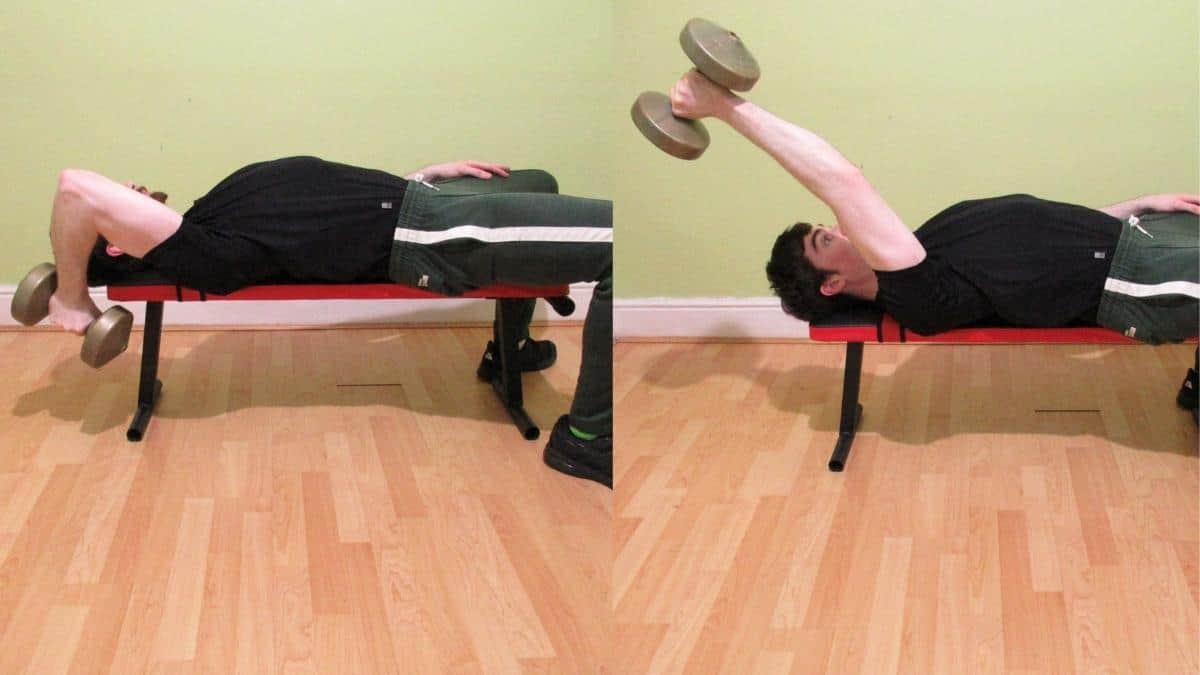
A single arm skull crusher is a variation of the traditional skull crusher exercise. Instead of using both arms to perform the exercise, you'll only use one arm at a time. This allows you to focus on each arm individually and work on any imbalances you may have.
How to Do a Single Arm Skull Crusher
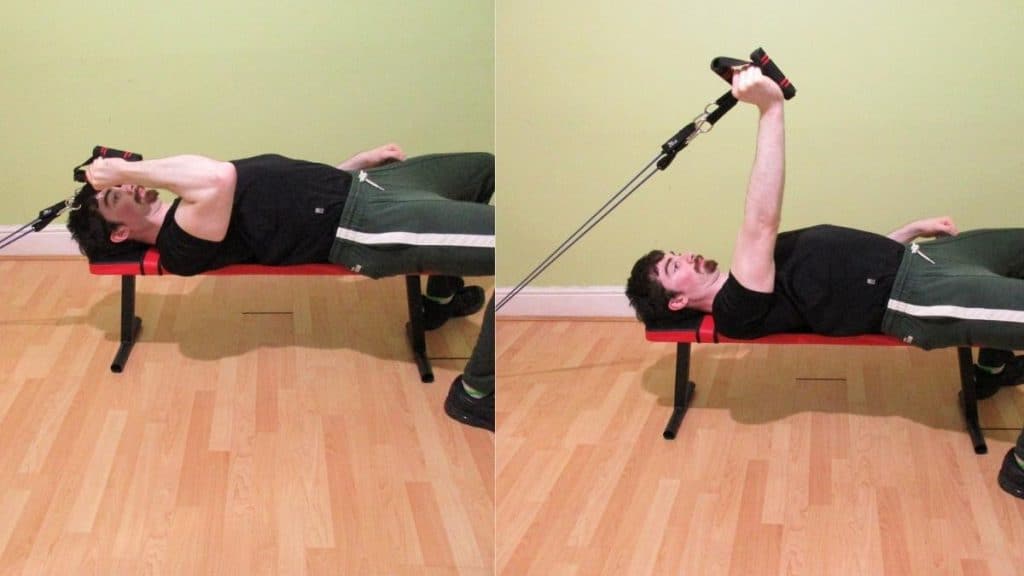
To perform a single arm skull crusher, follow these steps:
- Lie down on a bench with a dumbbell in one hand.
- Extend your arm straight up towards the ceiling.
- Lower the weight behind your head by bending your elbow.
- Extend your arm back up towards the ceiling.
- Repeat for the desired number of reps.
- Switch arms and repeat.
Tips for Doing a Single Arm Skull Crusher

Here are some tips to help you perform the exercise correctly:
- Use a weight that challenges you but that you can still control.
- Keep your elbow close to your head throughout the movement.
- Lower the weight slowly and under control.
- Don't let your elbow flare out to the side.
- Keep your core engaged throughout the exercise.
Benefits of the Single Arm Skull Crusher

The single arm skull crusher offers several benefits, including:
- Targeting the triceps muscles more effectively than traditional skull crushers.
- Allowing you to work on any imbalances you may have between your arms.
- Providing a challenging exercise that can help increase muscle strength and size.
- Improving overall arm and shoulder strength.
Alternatives to the Single Arm Skull Crusher

If you're unable to do the single arm skull crusher, try these alternatives:
- Traditional skull crushers
- Dumbbell triceps extensions
- Cable triceps pushdowns
- Close grip bench press
Conclusion
The single arm skull crusher is a challenging exercise that can help you build strength and size in your triceps muscles. By following proper form and using a weight that challenges you, you can reap the benefits of this exercise. Remember to also try alternative exercises if you're unable to do the single arm skull crusher. Incorporate this exercise into your workout routine and watch your triceps muscles grow!
Related video of Single Arm Skull Crusher: A Comprehensive Guide

Skull crushers are one of the most effective exercises for targeting the triceps muscles. If you’re looking to build bigger and stronger arms, incorporating skull crushers into your workout routine is a must. In this article, we’ll take a look at how to do skull crushers with dumbbell.
What You Need

To do skull crushers with dumbbell, you’ll need a pair of dumbbells that are heavy enough to challenge your triceps but light enough that you can perform the exercise with proper form. Start with a weight that you’re comfortable with and gradually increase the weight as you get stronger.
How To Do Skull Crushers With Dumbbell

Here are the steps to do skull crushers with dumbbell:
- Lie flat on a bench with your feet flat on the floor.
- Hold a pair of dumbbells with an overhand grip and extend your arms straight up towards the ceiling.
- Bend your elbows and lower the dumbbells towards your forehead.
- Pause briefly at the bottom of the movement and then extend your arms back up to the starting position.
- Repeat for the desired number of reps.
Tips For Proper Form

When doing skull crushers with dumbbell, it’s important to maintain proper form to avoid injury and get the most out of the exercise. Here are some tips for proper form:
- Keep your elbows close to your head throughout the movement.
- Don’t let your elbows flare out to the sides.
- Keep your wrists straight and don’t let the dumbbells drop behind your head.
- Lower the weight slowly and with control.
Variations Of Skull Crushers With Dumbbell

There are several variations of skull crushers with dumbbell that you can try to target different areas of your triceps:
- Close-grip skull crushers – This variation involves holding the dumbbells closer together, which targets the medial head of the triceps.
- Incline skull crushers – This variation involves performing the exercise on an incline bench, which places more emphasis on the long head of the triceps.
- Single-arm skull crushers – This variation involves holding one dumbbell with one hand and performing the exercise, which helps to correct muscle imbalances between your left and right arms.
Conclusion
Skull crushers with dumbbell are a great exercise for building bigger and stronger triceps. By incorporating this exercise into your workout routine and following proper form, you can achieve the results you desire. Remember to start with a weight that you’re comfortable with and gradually increase the weight as you get stronger. Give it a try and feel the burn!
Related video of How To Do Skull Crushers With Dumbbell

If you're looking to build strong and defined triceps, then the single rope tricep extension is an exercise you can't afford to miss. This exercise targets your triceps, the muscles on the back of your upper arm, and helps to increase their strength and size.
What is a Single Rope Tricep Extension?
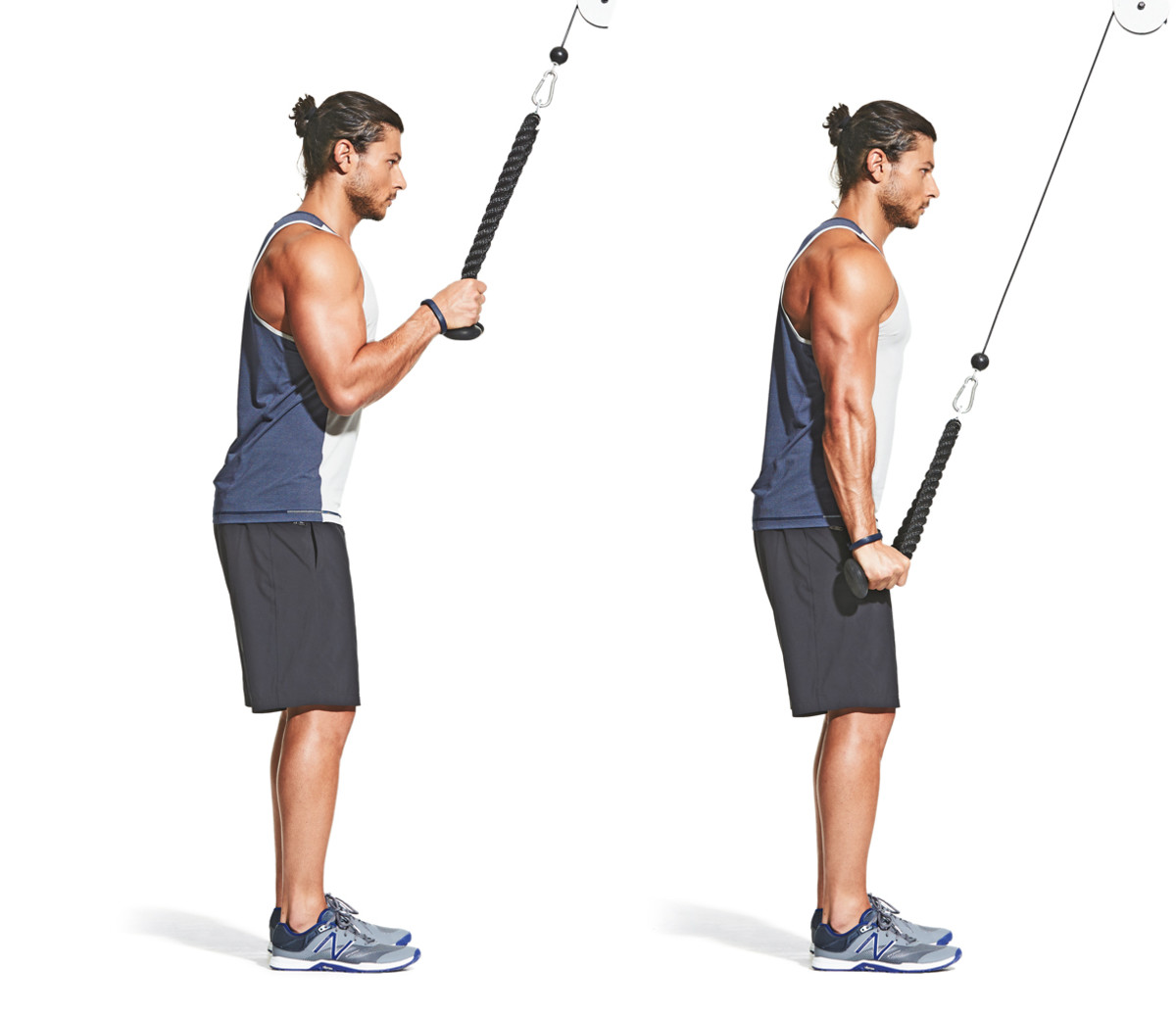
A single rope tricep extension is a strength training exercise that involves using a cable machine with a rope attachment. The exercise is performed by standing facing the cable machine with your feet shoulder-width apart and your knees slightly bent. You then grab the rope with both hands and extend your arms downwards until your triceps are fully contracted. You then slowly lower the rope back to the starting position.
How to Perform a Single Rope Tricep Extension?

Here's a step-by-step guide on how to perform a single rope tricep extension:
- Attach a rope to a cable machine at the highest setting and select a weight that you're comfortable with.
- Stand facing the cable machine and grab the rope with both hands, palms facing each other.
- Step back from the cable machine with your feet shoulder-width apart and your knees slightly bent.
- Extend your arms downwards until your triceps are fully contracted.
- Hold this position for a second or two, then slowly raise the rope back to the starting position.
- Repeat for the desired number of repetitions.
It's important to keep your elbows close to your head throughout the exercise to fully target your triceps. Also, make sure to use a weight that you can comfortably control to avoid injury.
Benefits of Single Rope Tricep Extension
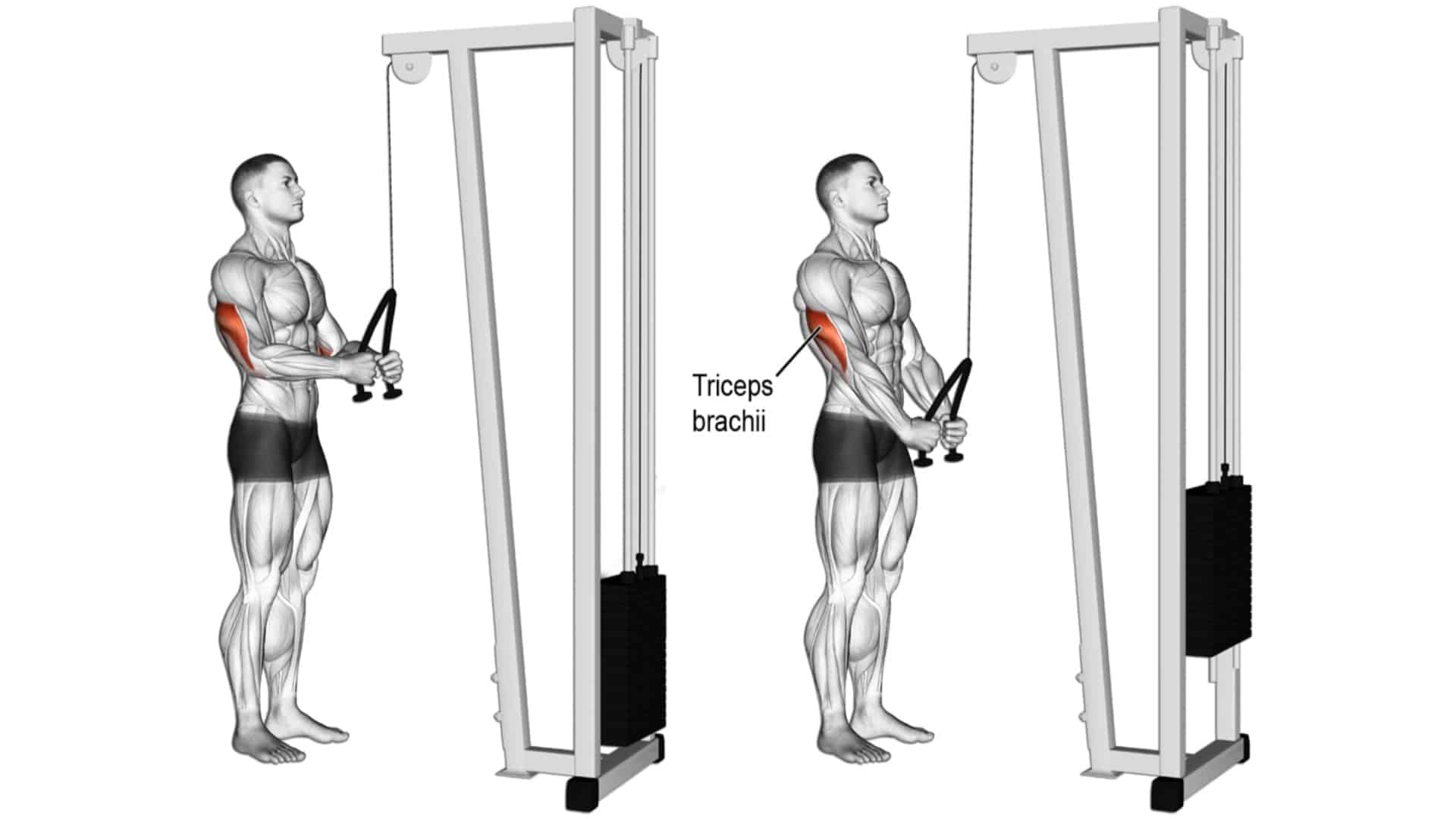
The single rope tricep extension is a highly effective exercise for building strong triceps. Here are some of the benefits:
- Helps to increase tricep strength and size
- Improves overall arm strength and definition
- Targets the triceps from different angles for better results
- Increases range of motion in the triceps
- Helps to improve posture and reduce the risk of injury
Single Rope Tricep Extension Variations
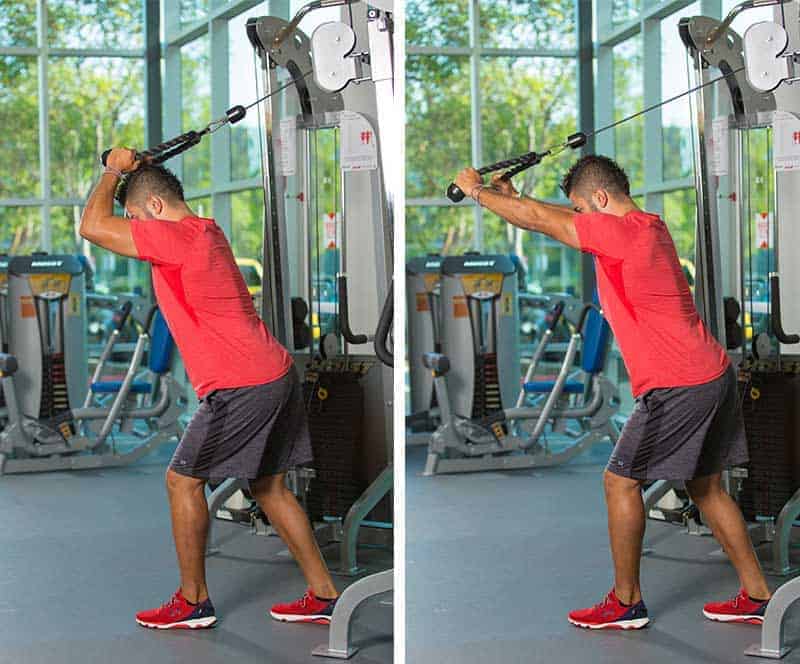
The single rope tricep extension can be performed in different variations to target your triceps from different angles. Here are some of the variations:
- Overhead single rope tricep extension
- Reverse grip single rope tricep extension
- Single arm single rope tricep extension
- Single rope tricep extension with a twist
By including these variations in your workout, you can challenge your triceps in different ways and achieve better results.
Conclusion
The single rope tricep extension is a highly effective exercise for building strong and defined triceps. By following the correct form and technique, you can target your triceps from different angles and achieve better results. Make sure to include this exercise in your workout routine and watch your triceps grow stronger and bigger.
Related video of Single Rope Tricep Extension: A Complete Guide to Build Strong Arms

When it comes to building strong glutes, hip thrusts are a popular exercise that many people swear by. However, not everyone has access to a bench to perform this exercise. Fortunately, there are several variations of the hip thrust that you can do without a bench. In this article, we'll explore some of the best hip thrusts no bench options that you can add to your workout routine.
The Basic Hip Thrust

If you don't have a bench, you can still do the basic hip thrust by lying on the floor with your knees bent and feet flat on the ground. Lift your hips up towards the ceiling, squeezing your glutes at the top of the movement, and then lower your hips back down to the starting position. Repeat for several reps.
Single Leg Hip Thrust

The single leg hip thrust is another great option for building strong glutes without a bench. Start by lying on your back with one foot on the ground and the other leg extended straight up towards the ceiling. Lift your hips up towards the ceiling, squeezing your glutes at the top of the movement, and then lower your hips back down to the starting position. Repeat for several reps before switching to the other leg.
Glute Bridge

The glute bridge is a simple yet effective exercise that can be done without a bench. Start by lying on your back with your knees bent and feet flat on the ground. Lift your hips up towards the ceiling, squeezing your glutes at the top of the movement, and then lower your hips back down to the starting position. Repeat for several reps.
Band-Resisted Hip Thrust

If you want to add some resistance to your hip thrusts without a bench, try the band-resisted hip thrust. Place a resistance band around your thighs, just above your knees, and then perform the basic hip thrust as described above. The band will add extra resistance, making the exercise more challenging.
Weighted Hip Thrust

If you have access to a dumbbell or kettlebell, you can add some weight to your hip thrusts for an extra challenge. Hold the weight on your hips as you perform the basic hip thrust or any of the other variations mentioned above.
Benefits of Hip Thrusts

Now that you know some of the best hip thrusts no bench options, let's take a look at some of the benefits of including hip thrusts in your workout routine:
- Builds strong glutes: Hip thrusts are one of the most effective exercises for building strong, toned glutes.
- Improves posture: Strong glutes help to improve posture and reduce the risk of lower back pain.
- Increases speed and power: Strong glutes are essential for sprinting, jumping, and other explosive movements.
- Improves overall athleticism: Hip thrusts can help to improve overall athleticism by building strength and power in the lower body.
Conclusion
Whether you have access to a bench or not, there are plenty of hip thrusts no bench options that you can add to your workout routine. From the basic hip thrust to the single leg hip thrust and beyond, these exercises are sure to help you build strong, toned glutes and improve your overall athleticism.
Related video of Hip Thrusts No Bench: A Guide to Building Strong Glutes
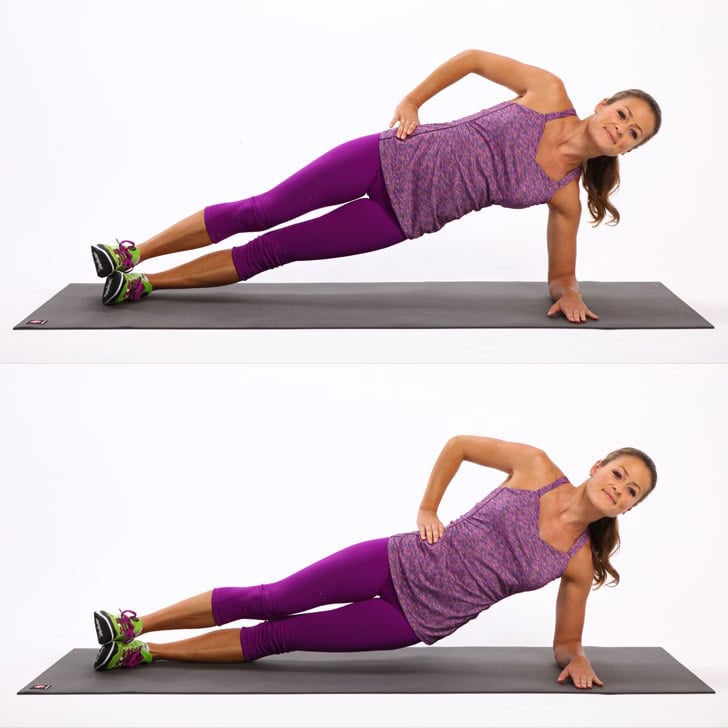
Plank dips are a popular exercise that involves a combination of a plank and a dip. This exercise helps to strengthen the core and upper body muscles. It is an effective way to tone your arms, shoulders, chest, and back muscles. In this article, we will explain what plank dips are and how to do them correctly.
What Are Plank Dips?
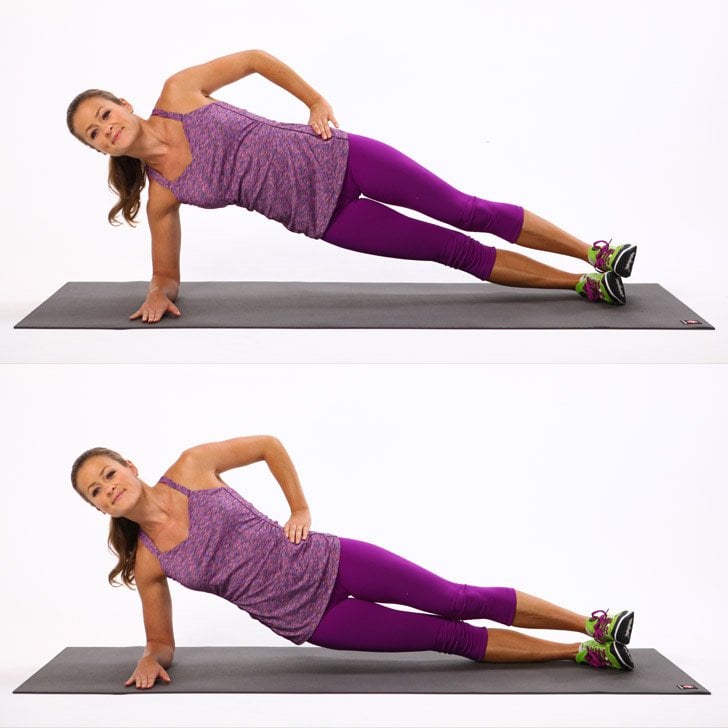
A plank dip is a bodyweight exercise that combines two different movements: the plank and the dip. The plank is a static exercise that involves holding your body in a straight line while resting on your forearms and toes. The dip, on the other hand, is a dynamic exercise that involves bending and straightening your arms to work your triceps and chest muscles.
When you combine the two exercises, you get the plank dip. This exercise involves performing a dip while holding a plank position. It requires a lot of strength and stability in your core and upper body muscles.
How to Do Plank Dips

Here are the steps to do plank dips:
- Start in a plank position with your forearms resting on the ground and your body in a straight line from head to toe.
- Engage your core and keep your hips level.
- Bend your elbows to lower your body towards the ground while keeping your elbows close to your sides.
- Push yourself back up to the starting position.
- Repeat for the desired number of reps.
Make sure to keep your body in a straight line throughout the exercise. Avoid letting your hips sag or lifting them too high.
Variations of Plank Dips
There are several variations of plank dips that you can try to make the exercise more challenging:
- Single-arm plank dips: Perform the exercise with one arm at a time to increase the workload on your triceps and chest muscles.
- Weighted plank dips: Hold a weight plate or dumbbell on your back to add resistance to the exercise.
- Side plank dips: Perform the exercise from a side plank position to target your oblique muscles.
Benefits of Plank Dips

Plank dips offer several benefits for your body:
- Strengthen your core and upper body muscles
- Tone your arms, shoulders, chest, and back muscles
- Improve your posture and balance
- Help you burn calories and lose weight
Plank dips are a great exercise to add to your workout routine if you want to improve your upper body strength and tone your muscles.
Conclusion
Plank dips are a challenging exercise that combines the plank and dip movements. They are effective for strengthening your core and upper body muscles and toning your arms, shoulders, chest, and back muscles. There are several variations of the exercise that you can try to make it more challenging. Add plank dips to your workout routine and enjoy the benefits they have to offer!
Related video of What Are Plank Dips?

Are you looking for a new arm exercise to add to your workout routine? Look no further than the Around The World Arm Exercise! This exercise targets multiple muscle groups in your arms and shoulders, all while providing a challenging and effective workout.
What is the Around The World Arm Exercise?
The Around The World Arm Exercise is a weightlifting exercise that involves lifting a dumbbell or weight plate in a circular motion around your head. This exercise is also sometimes referred to as the "windmill" or "halo" exercise.
The exercise can be performed standing or kneeling, and can be done with a variety of weights depending on your strength level. It is important to use proper form and technique to avoid injury.
What Muscles Does the Around The World Arm Exercise Target?

The Around The World Arm Exercise targets multiple muscle groups in your arms and shoulders, including:
- Shoulder muscles (deltoids)
- Triceps
- Biceps
- Forearms
By working these muscles, the exercise can help improve your overall upper body strength and tone your arms.
How to Do the Around The World Arm Exercise

To perform the Around The World Arm Exercise:
- Stand or kneel with your feet shoulder-width apart and your core engaged.
- Hold a weight plate or dumbbell with both hands in front of your body.
- Lift the weight up and over your head in a circular motion, keeping your arms straight and your core engaged.
- Lower the weight back down to the starting position, again in a circular motion.
- Repeat the exercise for 10-12 reps, or as many as you can comfortably perform with good form.
It is important to maintain proper form throughout the exercise to avoid injury. Make sure to keep your core engaged, your arms straight, and your movements controlled.
Variations of the Around The World Arm Exercise

The Around The World Arm Exercise can be modified or adapted to fit your fitness level and goals. Some variations of the exercise include:
- Using a heavier or lighter weight plate or dumbbell
- Performing the exercise while kneeling instead of standing
- Adding a squat or lunge to the exercise to engage your lower body
- Performing the exercise in reverse, starting with the weight behind your head and bringing it forward in a circular motion
Experiment with different variations to find the one that works best for you and your fitness goals.
Benefits of the Around The World Arm Exercise

The Around The World Arm Exercise offers numerous benefits, including:
- Improved upper body strength and muscle tone
- Engagement of multiple muscle groups in your arms and shoulders
- Increased core engagement and stability
- Improved flexibility and range of motion in your arms and shoulders
Incorporating the exercise into your workout routine can help you achieve your fitness goals and improve your overall upper body strength and endurance.
Conclusion
The Around The World Arm Exercise is a challenging and effective way to work multiple muscle groups in your arms and shoulders. By incorporating the exercise into your workout routine, you can improve your upper body strength, muscle tone, and overall fitness level. Experiment with different variations of the exercise to find the one that works best for you and your fitness goals. Remember to always use proper form and technique to avoid injury.
Related video of Around The World Arm Exercise

The sumo squat is a variation of the traditional squat exercise that targets the lower body muscles including the quads, hamstrings, glutes, and calves. It is named after the sumo wrestler stance, which involves a wide stance with toes pointed outwards.
Quadriceps

The quadriceps are the muscles located on the front of your thighs. Sumo squats specifically work the quadriceps muscles by requiring you to push through your heels and extend your knees while keeping your back straight. This movement strengthens and tones the quads, making them stronger and more defined.
Hamstrings

The hamstrings are the muscles located on the back of your thighs. Sumo squats target the hamstrings by requiring you to lower your body into a deep squat position, which stretches and strengthens the hamstrings. This movement also helps to prevent injury and improves athletic performance.
Glutes

The glutes are the muscles located in your buttocks. Sumo squats work the glutes by requiring you to push through your heels and extend your hips while keeping your back straight. This movement strengthens and tones the glutes, making them firmer and more lifted.
Calves

The calves are the muscles located on the back of your lower legs. Sumo squats engage the calves by requiring you to push through your heels and lift your body up from the deep squat position. This movement strengthens and tones the calves, making them stronger and more defined.
Core
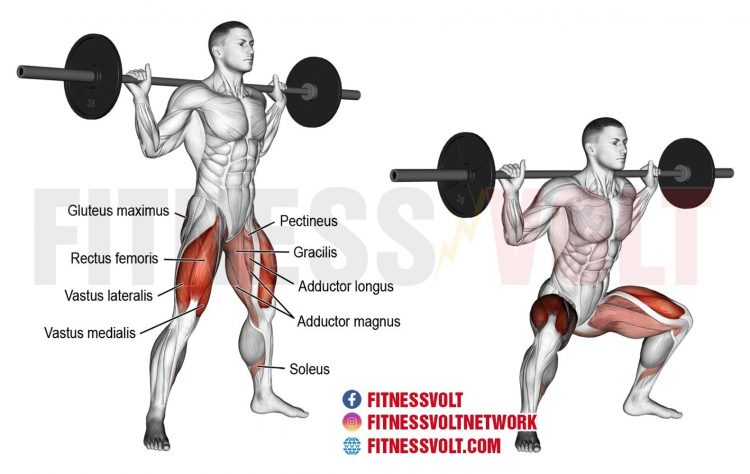
The core muscles include the abdominals, lower back muscles, and obliques. Sumo squats engage the core muscles by requiring you to maintain a straight back and tight core throughout the movement. This helps to improve posture, balance, and stability.
Cardiovascular System

Sumo squats are a high-intensity exercise that can elevate your heart rate and improve cardiovascular health. This movement requires a lot of energy and effort, which can help to burn calories and increase stamina.
Conclusion
Overall, sumo squats are a great exercise for targeting multiple muscle groups in the lower body and improving overall fitness. By incorporating sumo squats into your workout routine, you can strengthen and tone your muscles, improve posture and balance, and boost cardiovascular health.
Related video of What Does Sumo Squat Work?
ads
Search This Blog
Blog Archive
- December 2022 (19)
- November 2022 (29)
- October 2022 (32)
- September 2022 (29)
- August 2022 (32)
- July 2022 (30)
- June 2022 (31)
- May 2022 (30)
- April 2022 (31)
- March 2022 (12)
About Me
